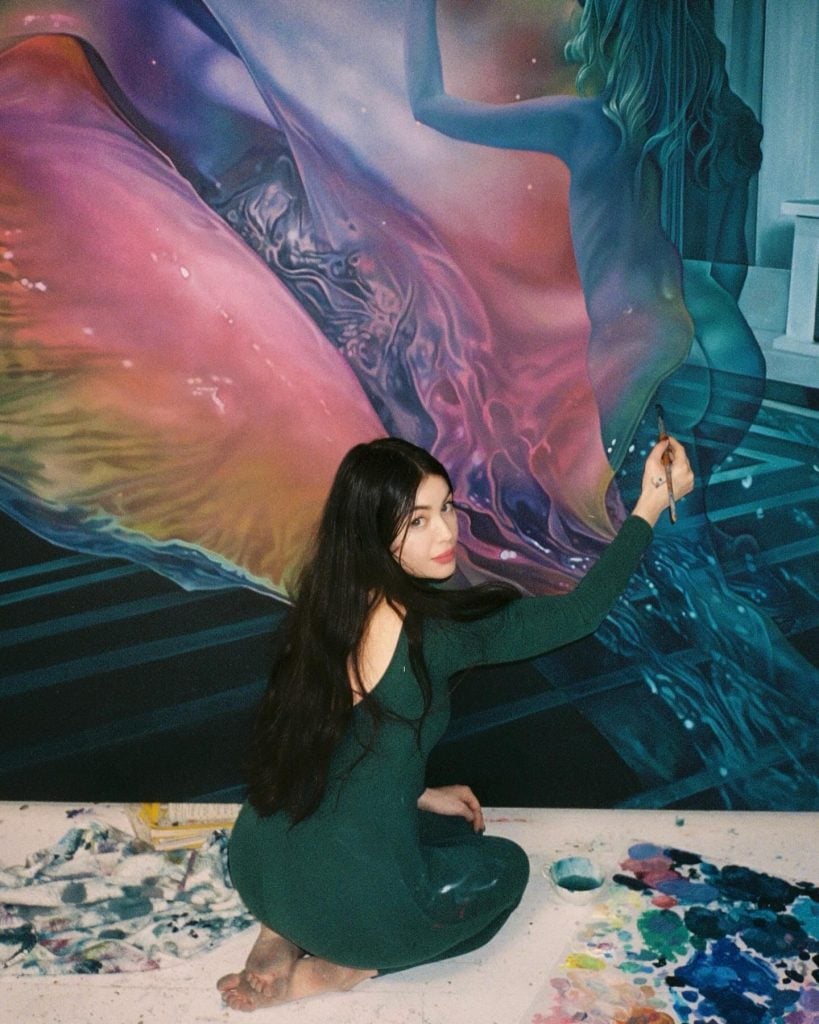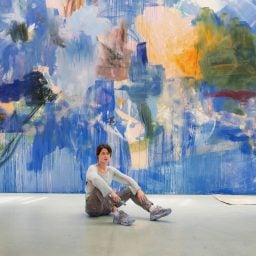In her luscious paintings, Ariana Papademetropoulos creates a world that is in a tantalizing balance between fantasy and reality. Her works capture the sublime wonder of the natural world, and the creative potential of the human mind. They feature mythical beasts, such as unicorns, but also items from everyday life that contain an otherworldly beauty, such as seashells, bubbles, and roses. Based in Rome, Los Angeles, and Greece, the painter often blurs indoor and outdoor scenes, with beds floating in vast seas or flowerbeds in place of carpets.
Papademetropoulos is currently working on her first installation art, creating a contemporary nymphaeum at Rome’s prestigious and historic Villa Medici. As part of her research, the artist has visited a number of natural and artificial caves in the region, from the former setting of an Aphrodite cult in Greece to Marie Antoinette’s exuberant dairy at Château de Rambouillet. She is interested in the feeling that these spaces evoke, whether real or not, and the role that both nature and artifice play in creating this aura.
Here, she talks about her time in Balthus’ studio at the Roman villa and shares images of towering female sculptures from field trips in Umbria; and journeys through a giant’s back into a manmade grotto.
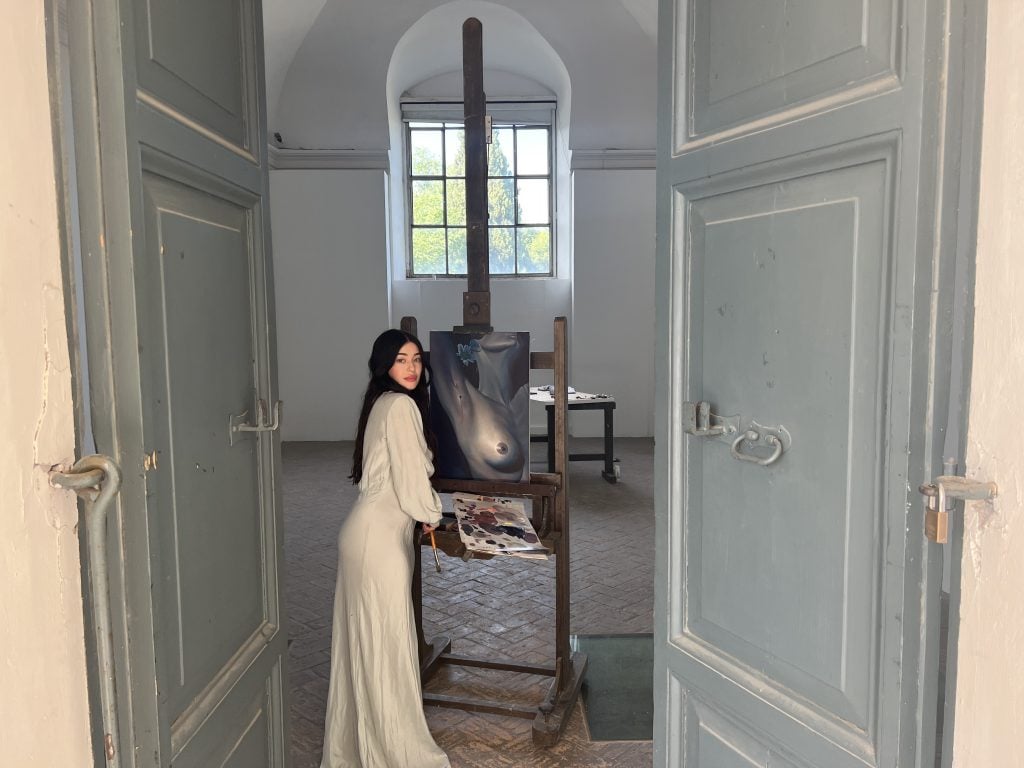
View from Balthus’s studio at Villa Medici. Photo: Ariana Papademetropoulos
This was taken last week while working in Balthus’s studio in Villa Medici. I am building a contemporary nymphaeum there, so I had access to his studio while working on it. I was told by [musician and singer] Caroline Polachek, who recorded in the same studio, that a skeleton was found inside a secret hole that opened into an underground tunnel!
Beneath Villa Medici is a labyrinth of Etruscan tunnels that leads you to the middle of the city. It’s inspiring to work in a place with thousands of years of history and mystery. It’s a balance of light and heavy energy, much like the controversial painter Balthus, whose vision of Villa Medici transformed it into what it is today.
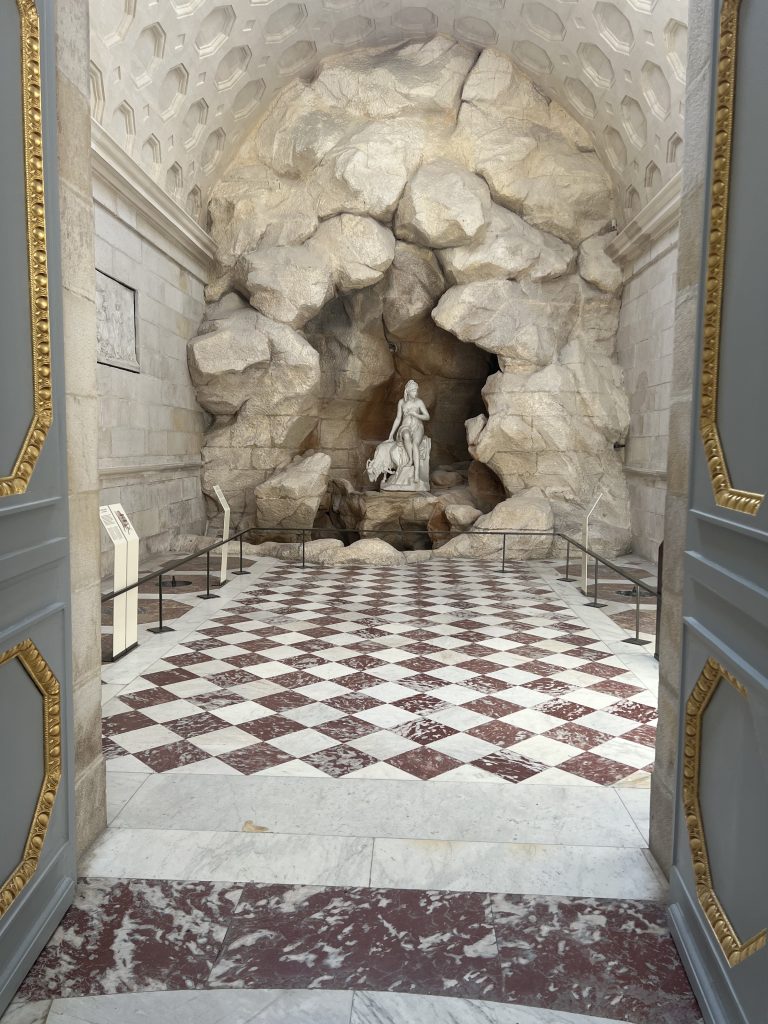
View from Marie Antoinette’s dairy in Château de Rambouillet. Photo: Ariana Papademetropoulos
I visited here a few weeks ago. This is Marie Antoinette’s dairy in Château de Rambouillet, which is not too far from Paris. As a gift, Louis XVI built her an ancient temple to taste all the fresh dairy products. It’s based on an Italian design of a nymphaeum, with the nymph Amalthea in the middle and steam machines all around to keep the cheese and cream fresh. So if you can imagine this grotto filled with milk and steam and delicious treats… It’s quite decadent.
As I work, I’ve been researching nymphaeums, which originated as ancient temples to nymphs and water goddesses. Over time, they evolved into more decorative additions to palaces or follies. I’m interested in taking them back to their original purpose. Both real and artificial caves have the same impression on the observer, thus I’m interested in discovering a balance between artifice and nature. Nymphs themselves are also liminal creatures, they are demigods—simultaneously human and goddess—and amphibious in that they inhabit land and water. My paintings, like the grotto and the nymph, explore liminal spaces between interior and exterior, this world and the next.
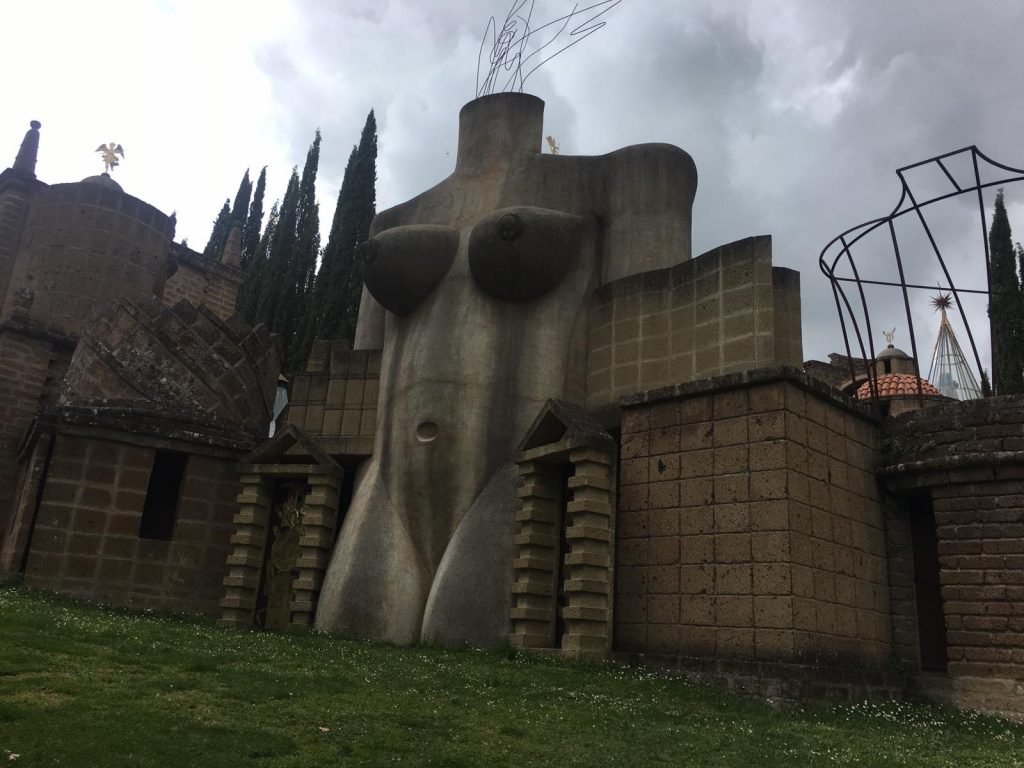
View of La Scarzuola. Photo: Ariana Papademetropoulos
This is La Scarzuola, located in Umbria. Tuscany has many fascinating sculpture parks. This used to be a convent in the 13th century. It was abandoned, and then a Milanese interior designer, Tomaso Buzzi, converted it into this property with multiple temples; there are sculptures of women, dragons… It’s from the 1950s, but to me it’s a bit timeless. You couldn’t tell whether it’s from the 1500s, 1800s, or 1970s. I think when something is permanent, it’s important for it to age well. I’ve noticed that my favorite type of art and architecture is when you can’t necessarily pinpoint what time period it’s from.
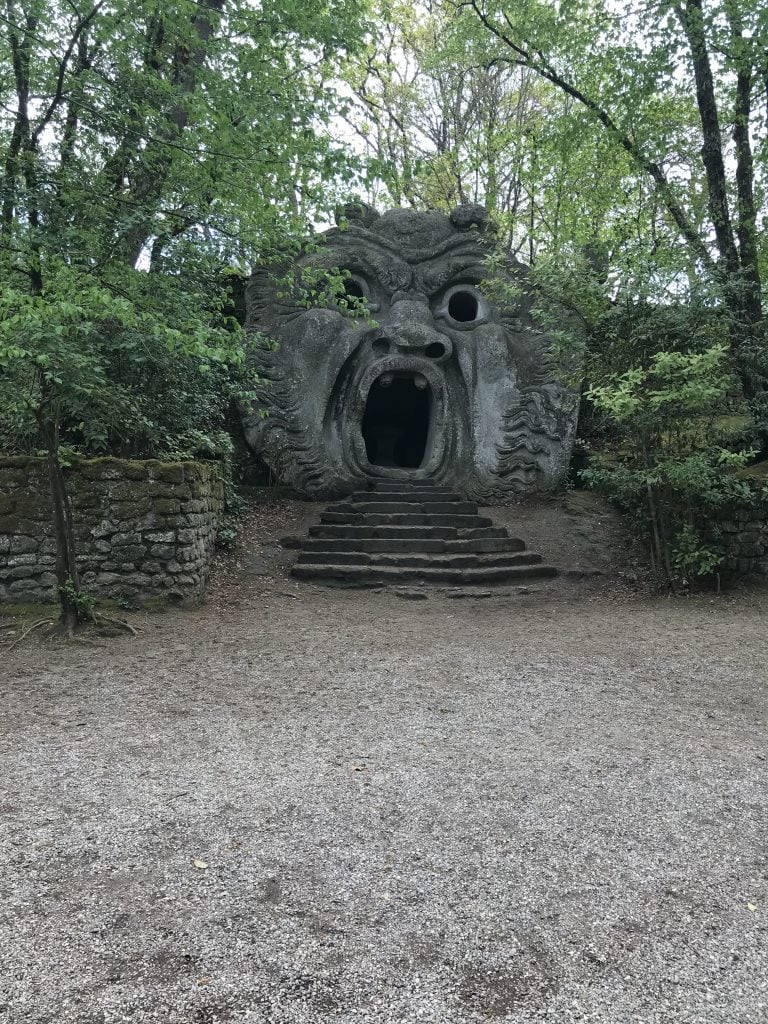
A view of Hell’s Mouth, from the theme park in Bomarzo, Italy. Photo: Ariana Papademetropoulos
This is Bomarzo, a sculpture theme park built in the 1500s. It’s next to La Scarzuola and it feels contemporary. It’s one of the first theme parks and it’s also known as Park of the Monsters (Parco dei Mostri). This is a picture of Hell’s Mouth. Pier Francesco Orsini built it to overcome the grief of the death of his wife. He was interested in the esoteric and the park is layered with symbolism and mysticism; there are giant mermaids, turtles, and even a fun house. It is like a normal house, but completely sinking and lopsided.
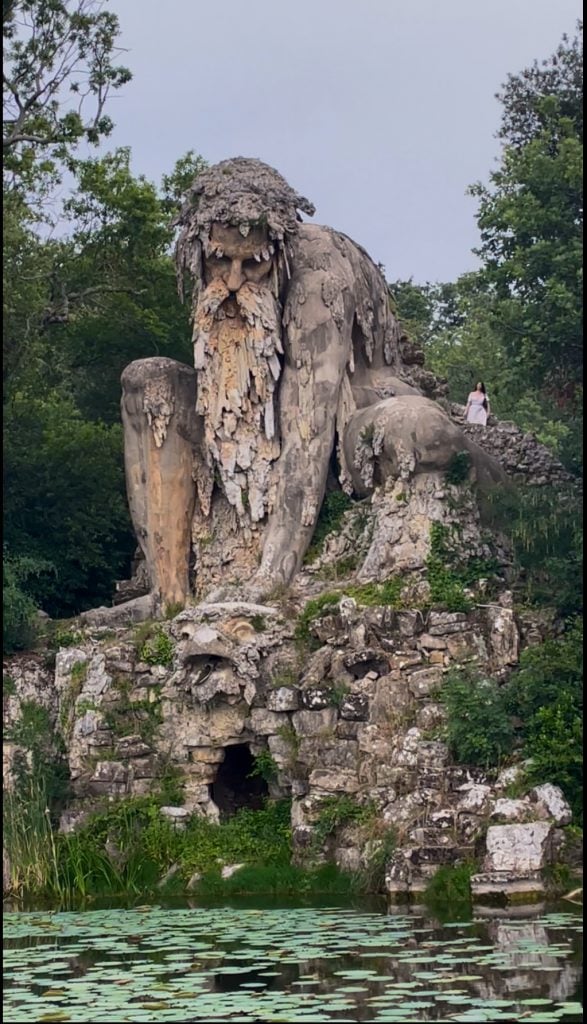
The Apennine Colossus. Photo: Ariana Papademetropoulos
This is The Apennine Colossus, about an hour from Florence. It was built by Francesco I de’ Medici. I’m just standing here for scale! From the front, it appears as a giant, but you can enter through the back and there is a grotto. Above the grotto, there is a stairway that leads to the head of the giant. Inside the head is a chamber, and sometimes there would be a small orchestra playing. At other times Francesco loved to fish into the pond. He would place a fishing line through one of the giant’s eyes. At night they would light torches inside the head so it would appear that he has glowing eyes. In all my travels, the colossus is the most otherworldly thing I have seen.
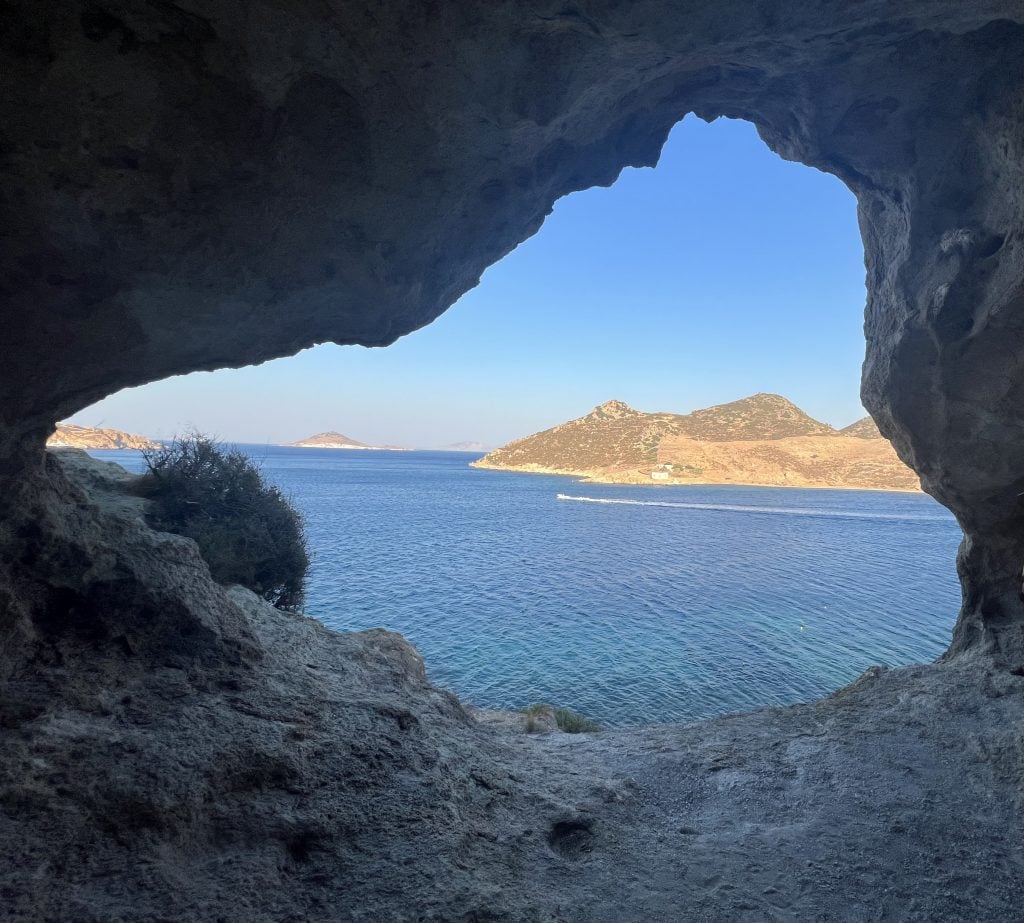
View from Patmos. Photo: Ariana Papademetropoulos
Patmos [in the Aegean Sea in Greece] is most famous for the Cave of the Apocalypse, where John wrote the Book of the Apocalypse when he was exiled on the island. If you haven’t read it, it the most psychedelic part of the Bible.
I originally went to Patmos as I was interested in this cave, but on the same trip I discovered manmade caves at Petra Beach. Every day, I would return to these caves, and found carved corridors that aligned with the setting sun, wells for ceremonies, and steps. There is no information at the site, but after a bit of research, I found it was the home of an Aphrodite Cult who inhabited the caves 3,000 years ago. Unfortunately, religions that worship female gods have not yet been studied in the same way as the ones that worship male gods, but what’s exciting is that there is a whole world to discover.
Welcome to Source Material, where artists share their creative journeys beyond the confines of the studio. From hunting down frescos in Florence to chasing storms in Cornwall, we explore the eclectic sources of inspiration that fuel artists’ imagination.
